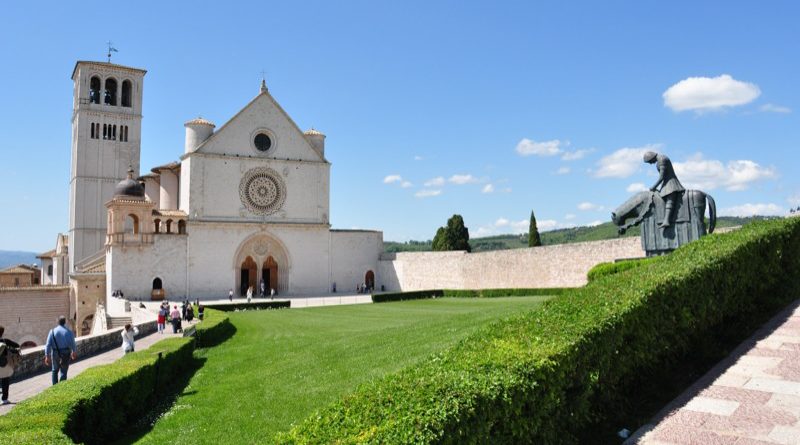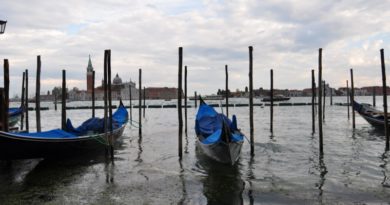Italy 2012 – Assisi and Perugia
This morning (Wednesday) we woke up around 8am, got ready quickly, got some cash, a cappuccino to go, and attempted to find our rental car. Since we parked it on Saturday in the lot outside the city wall we couldn’t actually remember which wall gate it was near. After a little extra walking around the city wall we found it and set out on the one hour drive to Assisi to meet our guide, Marco.

Assisi is a small hill town east of Perugia that is classically Medieval. In fact, Assisi has annual medieval games and each of the three districts inside the city wall compete for awards on which can recreated the most accurate medieval displays.

We saw them building temporary structures and even adding fake sections of stone carvings into existing walls and covering modern metal signs with burlap and other materials. Assisi is a beautiful place, high on the hill with great views of the valley and a large fortress on the peak of the hill looking down on the city. It is here in Assisi where S. Francesco is remembered. Francesco was essentially responsible for bringing Christianity back to the people in the 13th century. The frescos that still remain in the cathedrals of Assisi are nothing short of amazing.

I absolutely love the bright, welcoming feel of Assisi. The feeling is reinforced with the colorful, medieval, flags hanging from the buildings as part of the annual contest.


Fun fact, only 2000 people live inside the city walls, 1400 of which are nuns and friars, only 600 are lay people. Another interesting fact… Assisi is known as The City of Peace. During the Second World War, the German commander Muller, a Catholic, who was responsible for organizing invasions in Italy, shelter hundreds of Jews and declared Assisi as a general hospital which saved the city from bombings.
After Assisi, we followed our guide to Perugia, the city where Amanda Knox was living for those interested. Perugia has a unique history in Italy. Like many of these hill towns, it has Umbrian roots, Etruscan embellishments, Roman add ons, and medieval overtones, but Perugia has one unique feature. The original city was “buried” by building a roof over the streets, sending the common population underground for years with a Palace built on top.

Later when the rulers were toppled, the palace was destroyed and a new mayors palace was built. Today, the underground is preserved as a public museum, and also used as part of a public walkway from the parking garage to the city center. The underground spaces are perfectly preserved and spotlessly clean, despite being the main thoroughfare for every single person entering and leaving the city. Security cameras are abundant!
Perugia is also known as the city with the “Endless Views” according to Marco, our guide. Certainly from the Mayors Palace, the views are fantastic.

Interestingly you can see Assisi across the valley and it turns out that the two cities were constantly at odds with each other. For background, catholic churches need a relic (typically the body, or part of a body, of a saint entombed in the church somewhere) in order to be considered a fully consecrated church. Back in the day, Assisi had true relics due in a large part to S. Francesco’s ties to the city, while Perugia had none. Perugia repeatedly attempted to steal relics for themselves from other cities (including Assisi) but it seems they were only successful in obtaining the wedding ring of the Virgin Mary (of her marriage to Joseph). Today, the “real” wedding ring is only shown a few days each year, while a fake one is normally displayed in a protected area of the cathedral.
After our tour of Perugia, we drove back to Cortona, dropped our things in the apartment, then went out in search of dinner. The sunset was really nice.

This is the first night we hadn’t made dinner reservations so we wandered around looking for some place new to try. We walked into a very small place off a side street and had what most Americans would consider an excellent meal.


– Posted using BlogPress from my iPad




